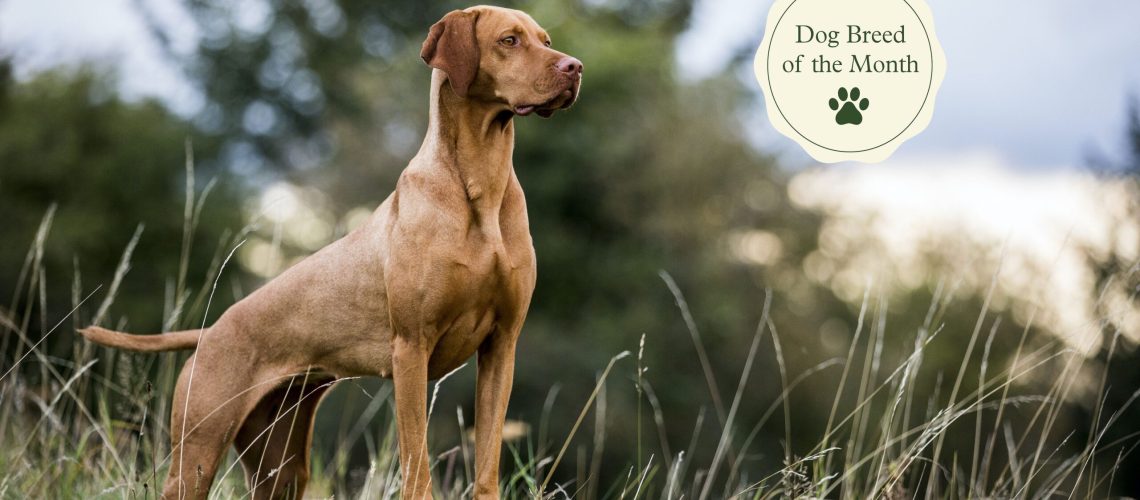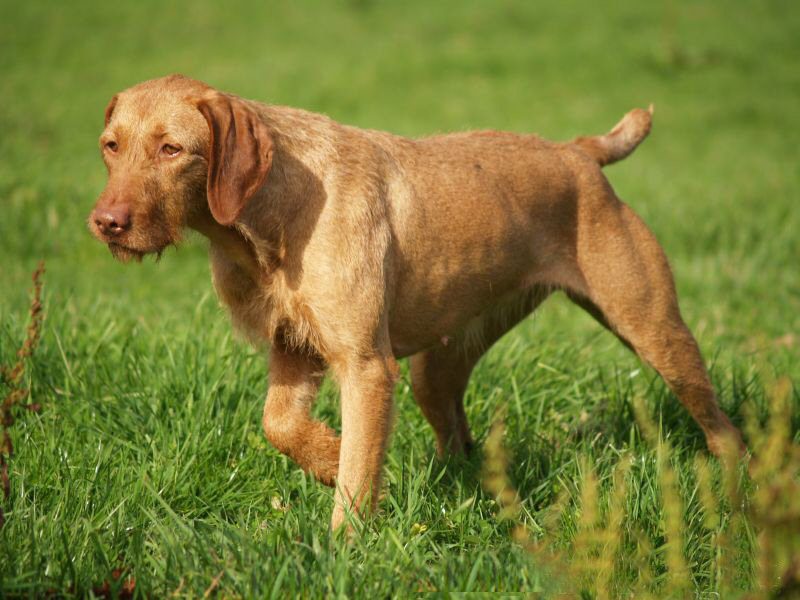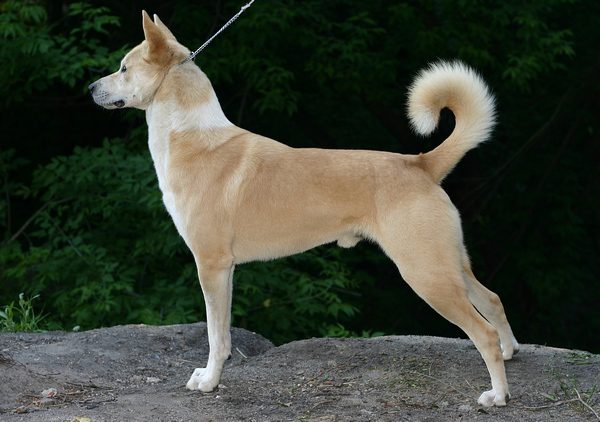Key Takeaways:
- Vizslas are energetic and active dogs that require regular exercise to keep them happy and healthy.
- They are highly intelligent and trainable, making them suitable for various activities such as obedience training and agility sports.
- Vizslas have a strong need for human companionship and can become anxious or destructive if left alone for long periods of time.
- Proper socialization from an early age is crucial for Vizslas to prevent behavioral issues such as shyness or aggression towards strangers.
- Vizslas have short coats that require minimal grooming, but they are prone to separation anxiety and may not do well in households where they are left alone frequently.
Are you ready to embark on a journey into the world of Vizslas? These remarkable dogs are not only adorable companions but also possess a unique set of characteristics that make them stand out from other breeds. Whether you're considering adding a Vizsla to your family or simply curious about these fascinating creatures, understanding their breed characteristics and care is essential. By delving into this subject, you will gain valuable insights into how to provide the best possible care for your furry friend and create a harmonious bond that will last a lifetime. So, let's dive in and uncover the secrets of the Vizsla breed together!
What is a Vizsla and what makes it special?
A Vizsla is a medium-sized breed of dog known for its elegant appearance and friendly nature. They have a short, smooth coat that can range in color from golden rust to dark copper. What sets the Vizsla apart from other breeds is its incredible athleticism and versatility.
The Vizsla was originally bred in Hungary for hunting purposes, specifically for pointing and retrieving game. They are highly skilled hunters with an excellent sense of smell and great speed. This makes them perfect companions for outdoor activities such as hiking, running, or even participating in dog sports like agility or obedience trials.
The History of the Vizsla
The history of the Vizsla dates back several centuries to Hungary, where they were highly valued by Hungarian nobility for their hunting abilities. They were often seen accompanying aristocrats on their hunting expeditions.
During World War II, the breed faced near extinction due to political unrest and economic difficulties in Hungary. Fortunately, dedicated breeders worked hard to revive the Vizsla population after the war, leading to their popularity spreading beyond Hungary's borders.
Characteristics of the Vizsla
- Vizslas are known for their friendly and affectionate nature. They are extremely loyal to their families and thrive on human companionship.
- They are intelligent dogs that are eager to please their owners. This makes them relatively easy to train compared to some other breeds.
- Vizslas have high energy levels and require plenty of exercise to keep them happy and healthy. Daily walks or runs, as well as playtime in a secure area, are essential for this breed.
- They have a strong prey drive, so it is important to socialize them from a young age and provide them with proper training to prevent any potential behavioral issues.
In summary, the Vizsla is a remarkable breed known for its athleticism, loyalty, and friendly nature. Whether you are an avid hunter or simply looking for a loving family pet, the Vizsla could be the perfect companion for you.
Why is the Vizsla a good choice for families?
The Vizsla is an excellent choice for families due to its friendly and affectionate nature. These dogs thrive on human companionship and love being part of a family unit. They are known for their gentle and patient demeanor, making them great with children of all ages. Whether it's playing in the backyard or cuddling on the couch, Vizslas are always eager to be involved in family activities.
Vizslas are also highly adaptable and versatile dogs. They can easily adjust to different living environments, whether it's a spacious suburban home or a cozy apartment. Their medium size makes them suitable for both indoor and outdoor living. Additionally, Vizslas have a natural instinct to protect their loved ones, making them excellent watchdogs.
Benefits of owning a Vizsla as a family:
- Loving and affectionate temperament
- Great with children
- Adaptable to various living environments
- Natural protective instincts
Testimonial from a Vizsla owner:
"Having a Vizsla as part of our family has been such a joy. Our kids absolutely adore him, and he's always patient and gentle with them. He loves joining us on our outdoor adventures, whether it's hiking or playing at the park. We feel safe knowing that he would do anything to protect us. I couldn't imagine our family without our loving Vizsla."
How to keep a Vizsla healthy and happy through exercise and mental stimulation
To keep your Vizsla healthy and happy, regular exercise is essential. These energetic dogs have high exercise needs that should be met to prevent boredom and destructive behavior. Aim for at least an hour of vigorous exercise every day, such as brisk walks, jogging, or playing fetch in a securely fenced area.
In addition to physical exercise, mental stimulation is crucial for Vizslas. They are intelligent dogs that thrive on mental challenges. Engage their minds with puzzle toys, obedience training sessions, and interactive games. This not only keeps them mentally sharp but also helps prevent behavioral issues that can arise from boredom.
Exercise and mental stimulation ideas for Vizslas:
- Daily brisk walks or jogs
- Off-leash playtime in a secure area
- Agility training or obstacle courses
- Nose work activities or scent games
- Obedience training sessions with rewards-based methods
Testimonial from a Vizsla owner:
"Keeping our Vizsla physically and mentally stimulated has made all the difference in his overall well-being. We take him on long walks every morning and evening, which he absolutely loves. We also challenge his mind with puzzle toys and obedience training sessions. Not only does he stay fit and healthy, but he's also a well-behaved and contented dog."
Grooming and care tips for maintaining a Vizsla's coat and overall well-being
The Vizsla has a short and dense coat that requires minimal grooming. Regular brushing with a soft-bristle brush helps remove loose hairs and keeps the coat shiny. Bathing should be done as needed using a mild dog shampoo to avoid stripping the natural oils from their skin.
Aside from grooming, proper care is essential for maintaining a Vizsla's overall well-being. Regularly check their ears for any signs of infection and clean them gently with a veterinarian-approved ear cleaner. Trim their nails regularly to prevent overgrowth and discomfort. Dental hygiene is also important, so introduce tooth brushing early on and provide dental chews or treats to promote good oral health.
Grooming and care tips for Vizslas:
- Regular brushing with a soft-bristle brush
- Bathing as needed with a mild dog shampoo
- Checking and cleaning ears regularly
- Trimming nails to prevent overgrowth
- Promoting dental hygiene through tooth brushing and dental treats
Testimonial from a Vizsla owner:
"Taking care of our Vizsla's grooming needs has been quite easy compared to other breeds. A quick brush every few days keeps his coat looking sleek, and baths are only necessary when he gets particularly dirty. We make sure to check his ears weekly and trim his nails regularly. With proper grooming and care, our Vizsla always looks and feels great."
Common health issues in Vizslas and how to prevent or manage them
Vizslas are generally healthy dogs, but like any breed, they can be prone to certain health issues. One common concern in Vizslas is hip dysplasia, a condition where the hip joint doesn't develop properly. Regular exercise, maintaining a healthy weight, and avoiding excessive jumping can help reduce the risk of hip dysplasia.
Another health issue that may affect Vizslas is epilepsy, which causes seizures. While there is no known cure for epilepsy, it can be managed with medication prescribed by a veterinarian. Regular veterinary check-ups and genetic testing before breeding can help identify potential health issues and prevent them from being passed on to future generations.
Common health issues in Vizslas:
- Hip dysplasia
- Epilepsy
- Allergies
- Progressive retinal atrophy (PRA)
Testimonial from a Vizsla owner:
"Our Vizsla unfortunately developed hip dysplasia, but with the guidance of our veterinarian, we managed it well. We made sure to provide him with regular exercise while being mindful of his limitations. It's important for Vizsla owners to be aware of potential health issues and work closely with their vet to ensure their dog's well-being."
The best training methods for intelligent and eager-to-please Vizslas
Vizslas are highly intelligent dogs that excel in training. They are eager-to-please and thrive on positive reinforcement methods. Reward-based training using treats, praise, and playtime is the most effective approach for teaching new commands and behaviors to Vizslas.
Consistency is key when training a Vizsla. Establish clear rules and boundaries from the beginning, and stick to them. Use short training sessions multiple times a day rather than long sessions, as Vizslas can become easily bored or distracted. Keep training sessions fun and engaging by incorporating games or interactive toys.
Tips for training intelligent Vizslas:
- Use positive reinforcement methods with treats, praise, and playtime
- Establish clear rules and boundaries
- Keep training sessions short and frequent
- Make training fun and engaging with games or interactive toys
Testimonial from a Vizsla owner:
"Training our Vizsla has been a breeze thanks to his intelligence and eagerness to please. We've had great success using positive reinforcement methods, rewarding him with treats and praise whenever he follows commands correctly. Keeping training sessions short and incorporating games has made it enjoyable for both of us. Our Vizsla is now well-behaved and always ready to learn something new."
Tips for socializing a Vizsla with other pets, children, and strangers
Socialization is crucial for Vizslas to develop into well-rounded dogs. Start socializing your Vizsla from an early age by exposing them to various people, animals, and environments. Introduce them to different sounds, sights, smells, and experiences gradually to prevent overwhelming them.
When socializing your Vizsla with other pets, ensure that the interactions are supervised and positive. Gradually introduce them to new animals in controlled settings, rewarding calm behavior. When it comes to children and strangers, teach your Vizsla appropriate behavior around them through consistent training and positive reinforcement.
Tips for socializing a Vizsla:
- Start socializing from an early age
- Expose them gradually to different people, animals, and environments
- Supervise interactions with other pets
- Reward calm behavior during introductions
- Consistently train appropriate behavior around children and strangers
Testimonial from a Vizsla owner:
"Socializing our Vizsla has been a rewarding experience. We started exposing him to various environments and people from the moment we brought him home. He now happily interacts with other dogs at the park and is always friendly towards children and strangers. Socialization has made our Vizsla confident and well-mannered in any situation."
In conclusion, Vizslas are a friendly and energetic dog breed that requires regular exercise and mental stimulation. They make great companions for active individuals or families who can provide them with love, attention, and proper care.
What is the personality of a Vizsla?
Vizslas have a loyal and loving nature, forming strong bonds with their family members. They are typically gentle and affectionate with children and can peacefully coexist with other dogs and cats, but it is important to socialize them properly from a young age.
What do I need to know about Vizslas?
Vizslas are a breed of dogs known for their versatility and athleticism. They have long, silky ears that give them a gentle and affectionate appearance when they are with their family, but they also have a more focused and intense expression when they are working. In general, Vizslas are known for their loyalty and strong bond with their owners.
Is the Vizsla a good family dog?
These dogs are more suitable for households with adults and older children. Like all dog breeds, it is advised to supervise children when they interact with these dogs. They are not well-suited for living in apartments and require a spacious environment due to their high energy levels.
Do Vizslas attach to one person?
Indeed, Hungarian Vizslas are highly sociable and affectionate dogs, renowned for developing strong connections with their owners. In fact, they frequently experience separation anxiety when left alone due to their deep fondness for human interaction, earning them the nickname 'Velcro dogs' as they prefer to remain close to their owners.
Can Vizslas be left alone?
Vizslas are known for developing strong attachments to their owners and greatly enjoy human companionship. However, if left alone, they often experience separation anxiety and may exhibit negative behavior as a result of stress. Ideally, Vizslas should have someone with them throughout the day to provide them with companionship.
Are Vizslas known to be aggressive?
Aggression. While this breed is generally not aggressive, it is important to note that individual dogs can vary in temperament. Vizslas are typically not dominant and do not try to assert dominance over other dogs or people. However, their intelligence can lead them to test their limits and see what they can get away with.

















